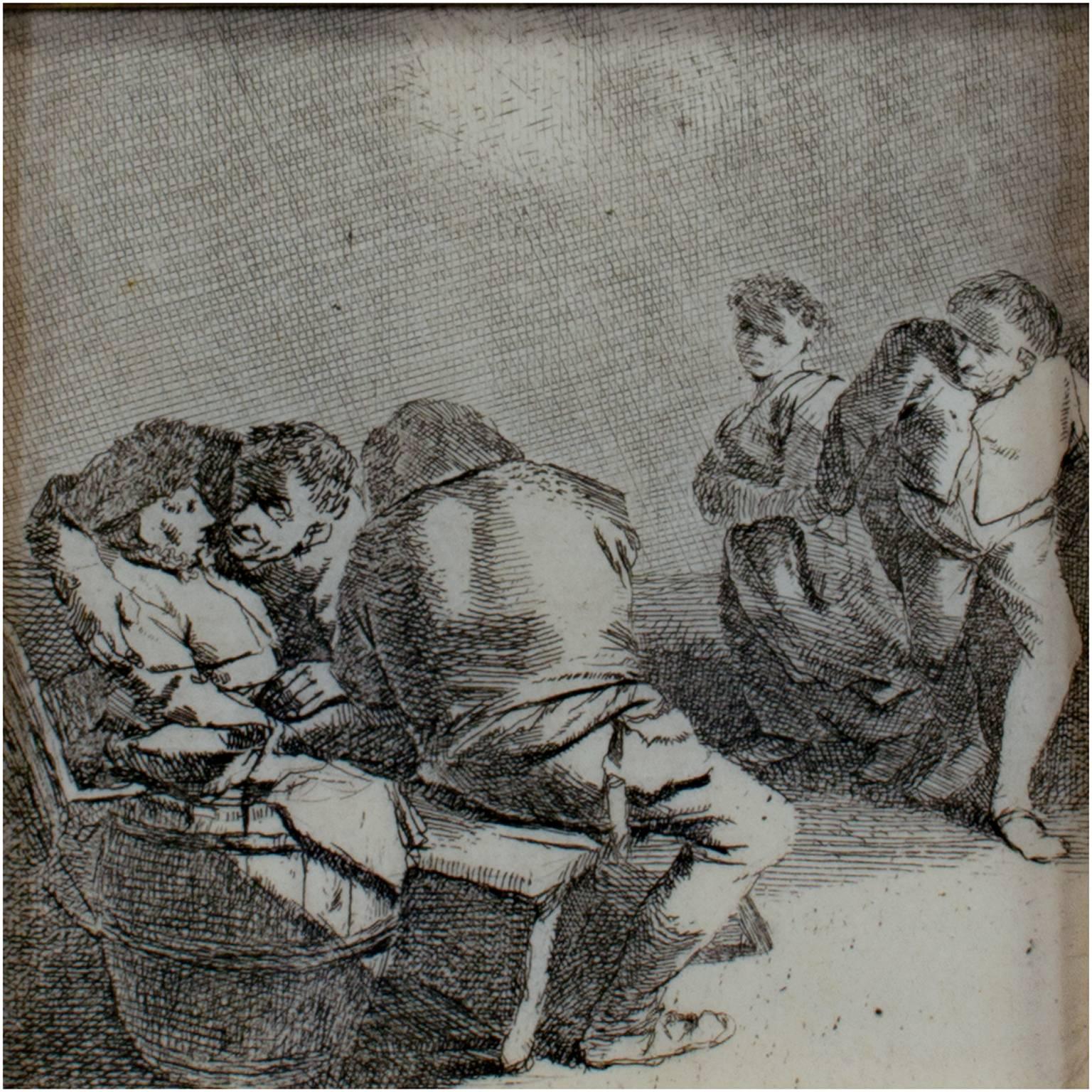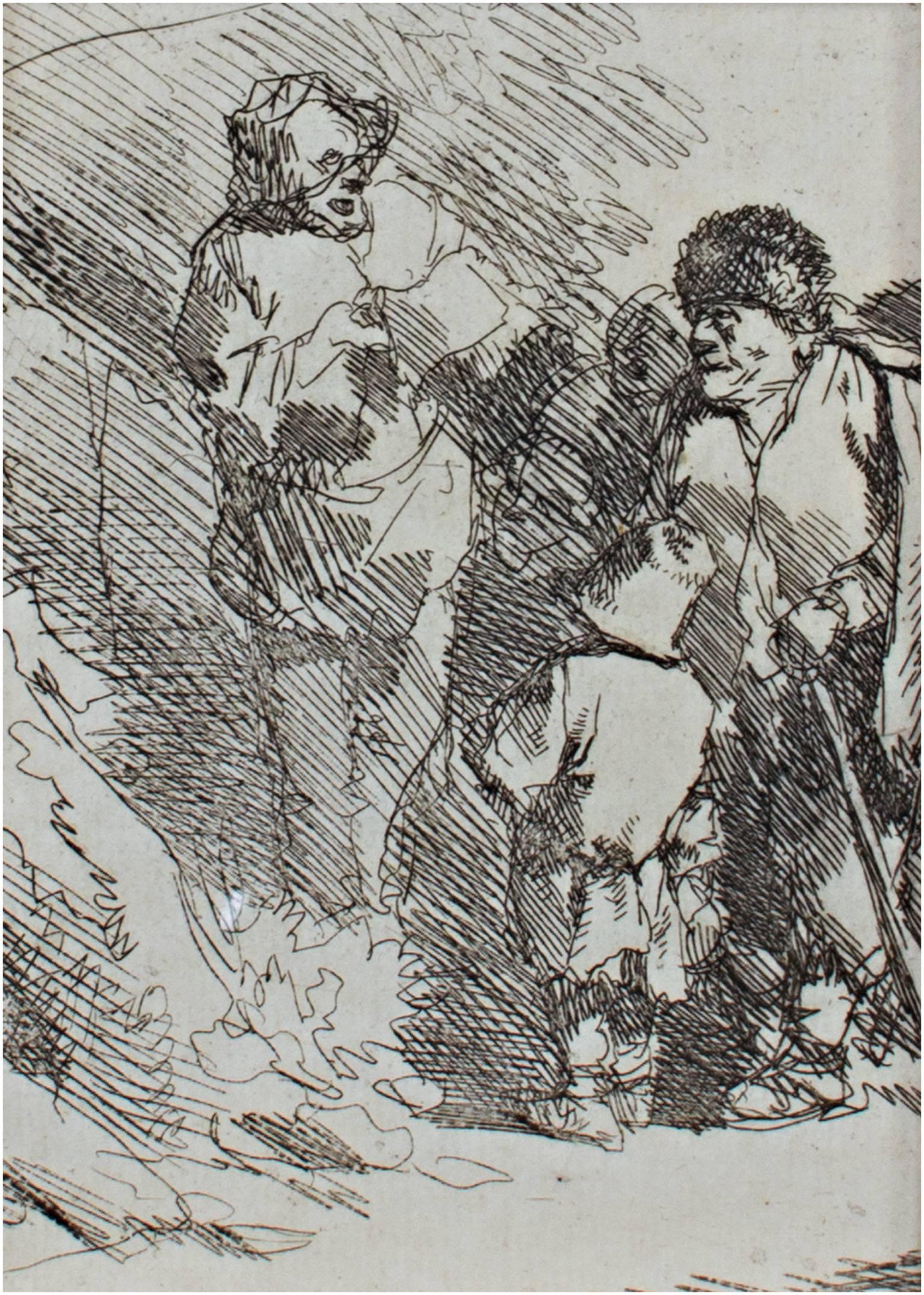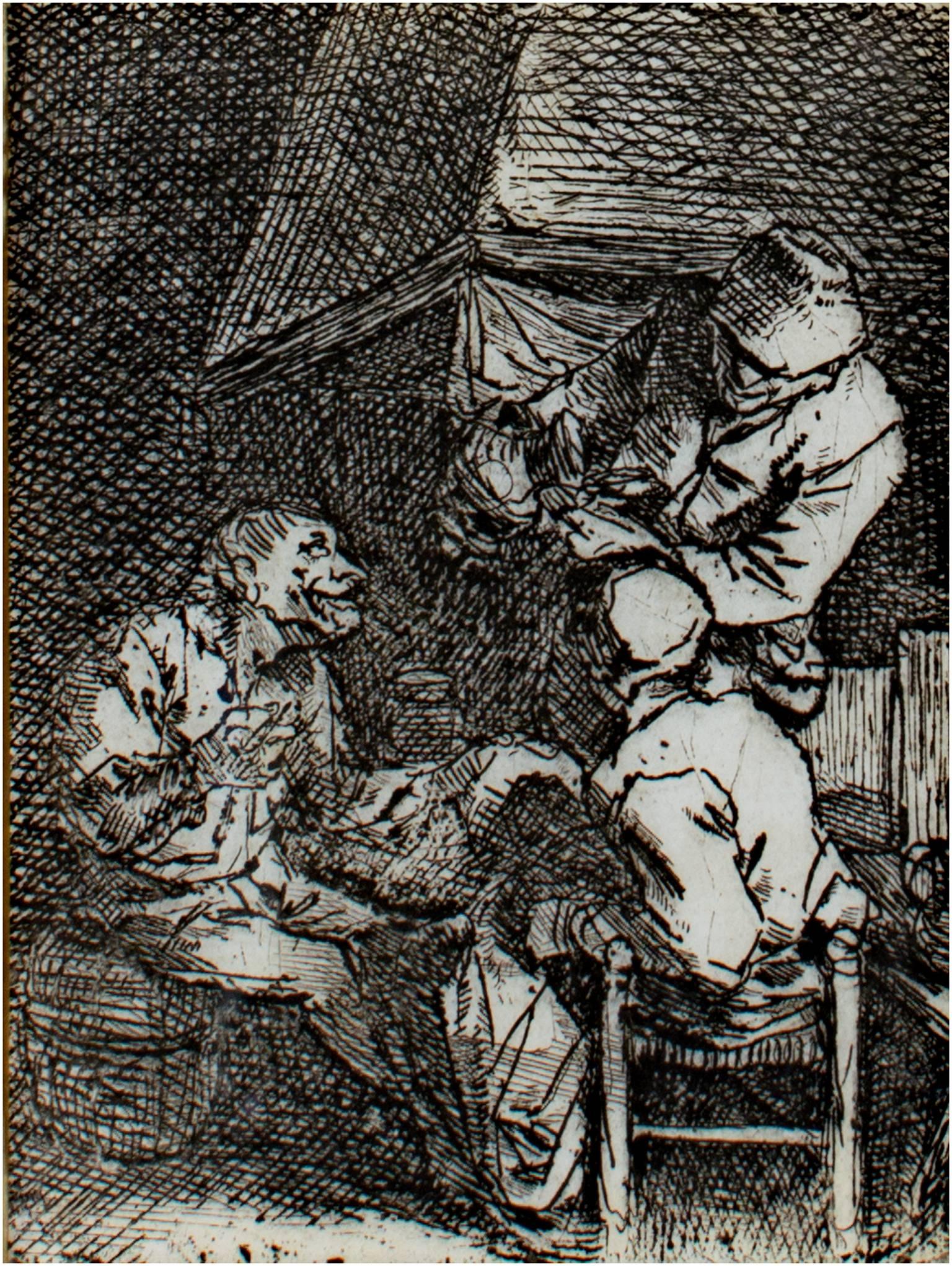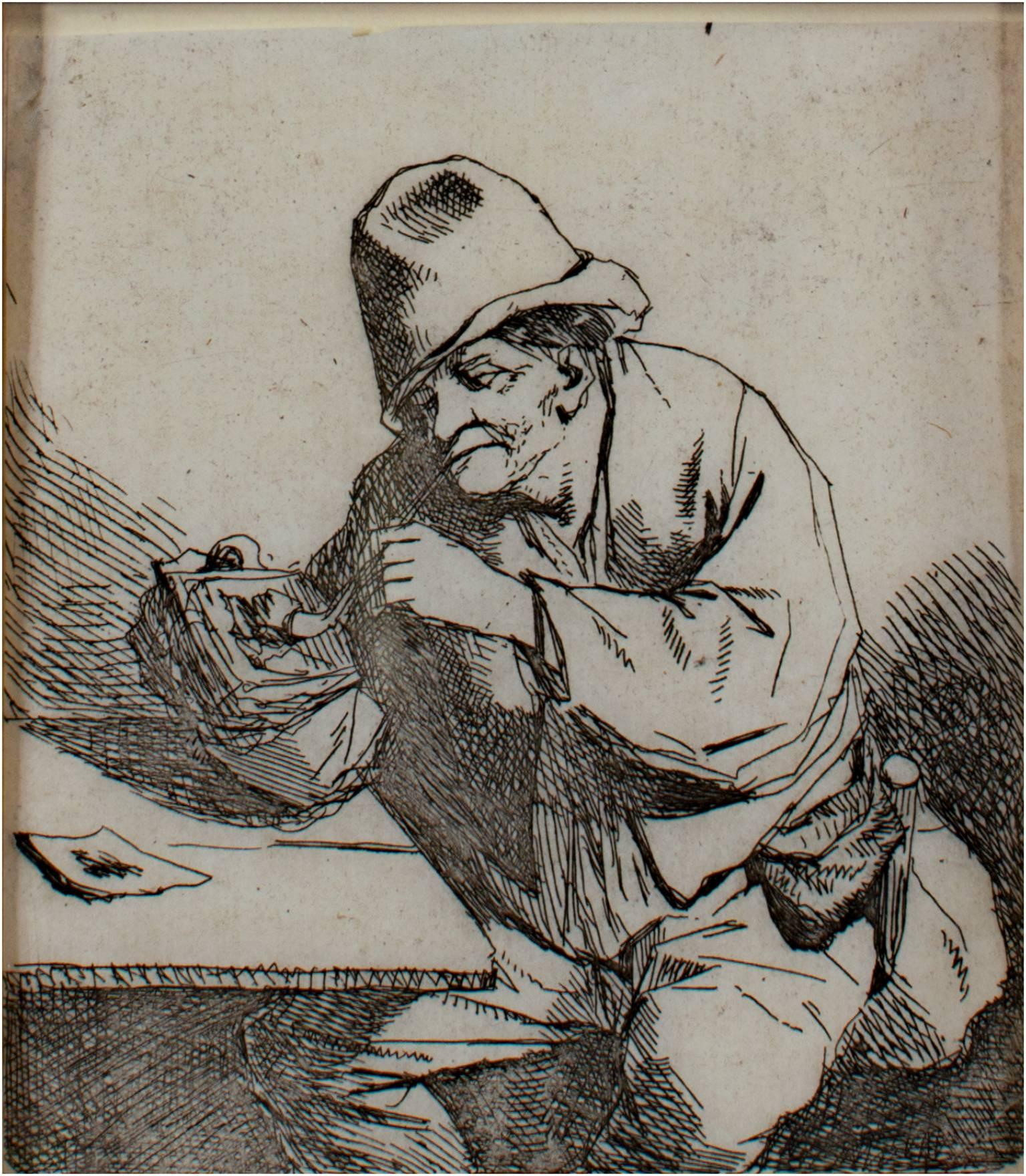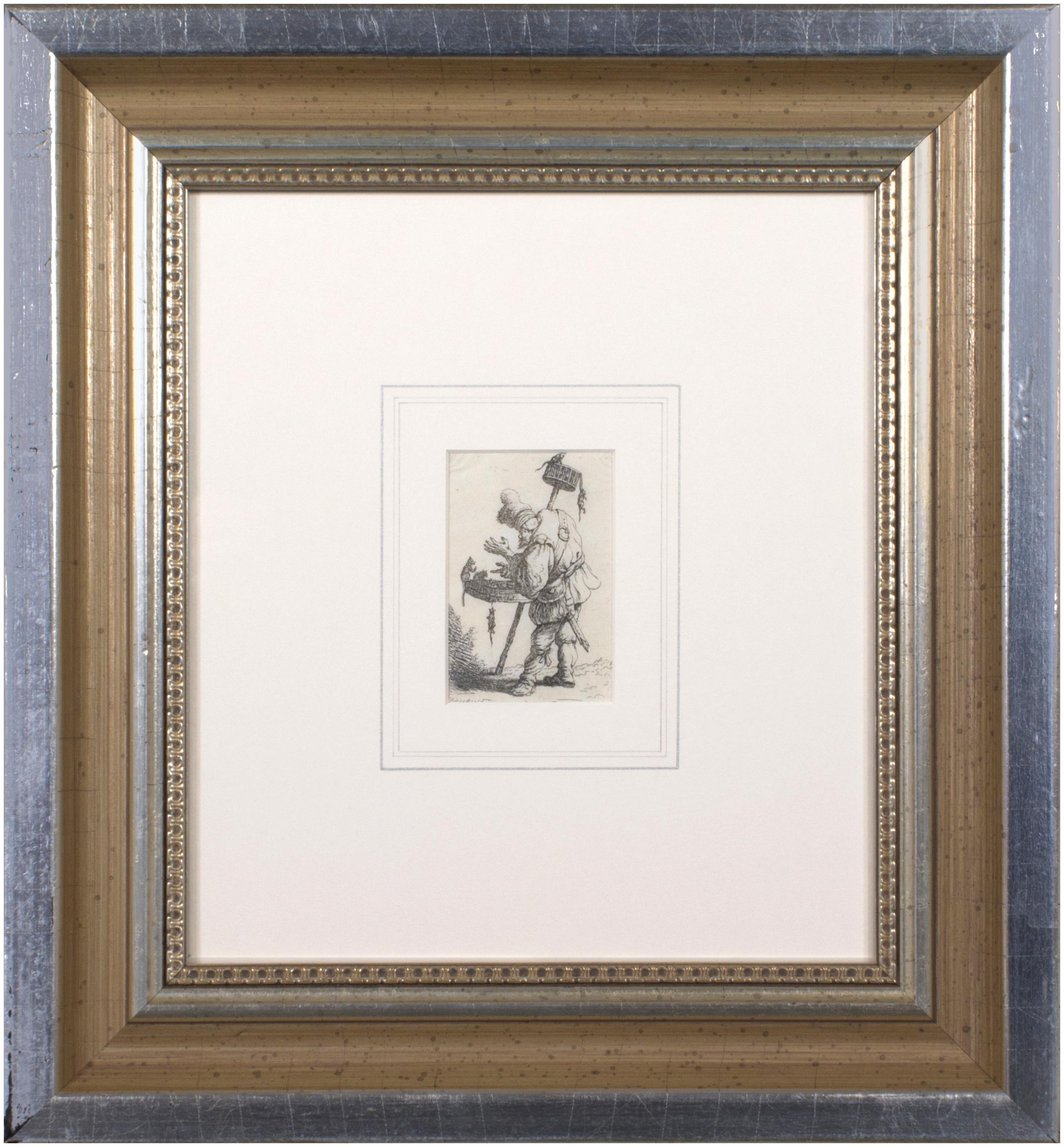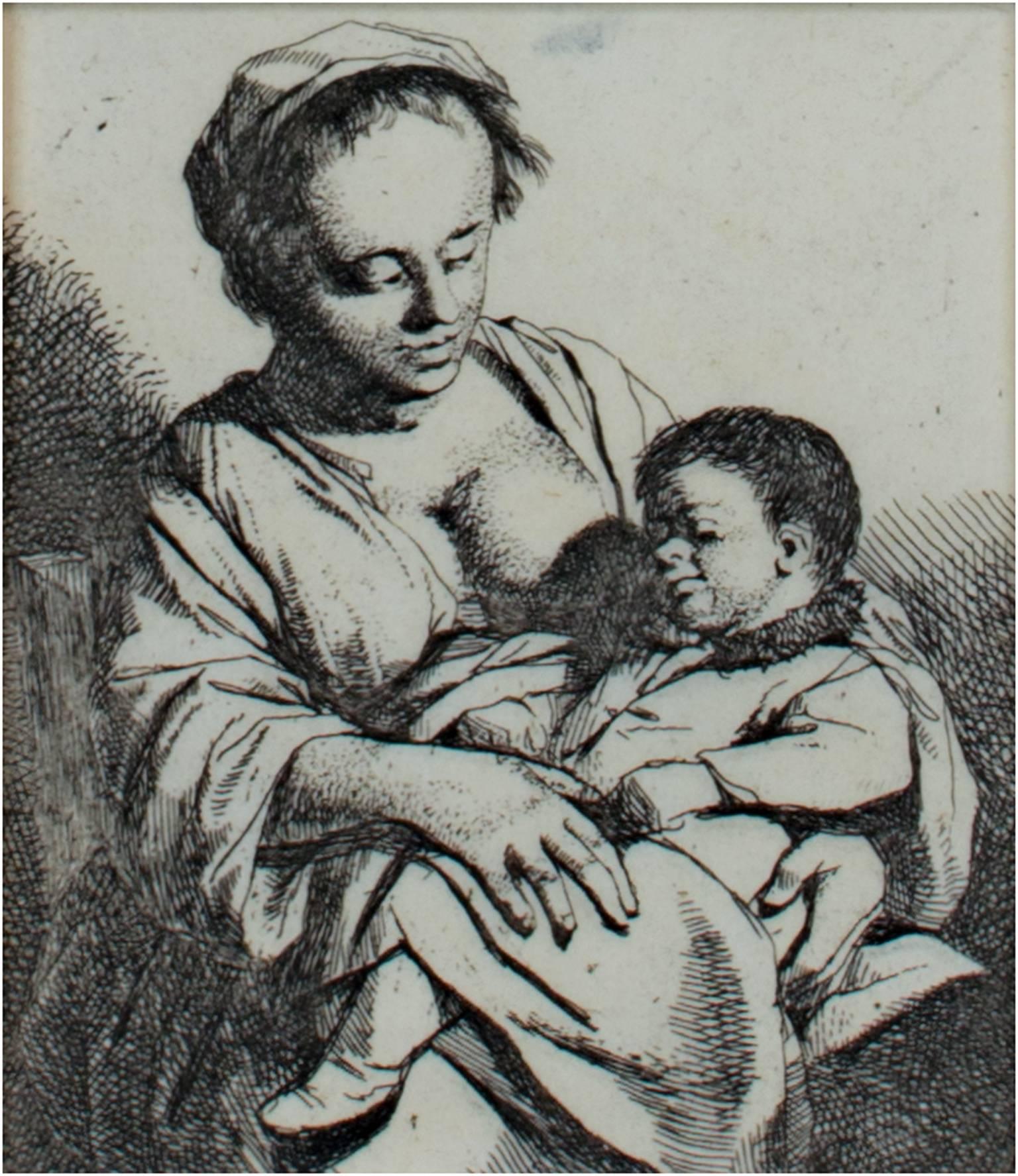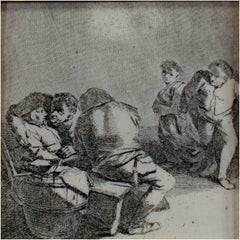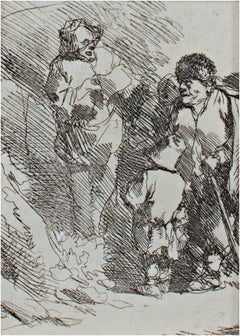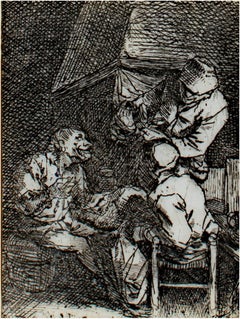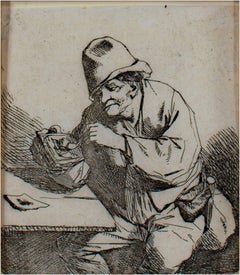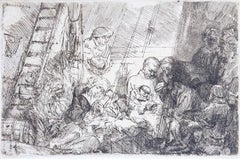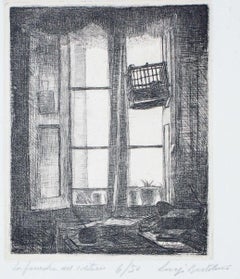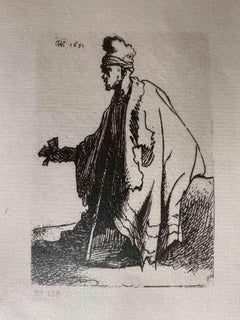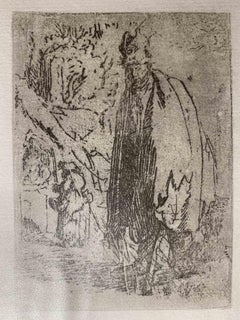Items Similar to 17th century etching black and white dramatic window figure scene
Want more images or videos?
Request additional images or videos from the seller
1 of 8
Cornelis Bega17th century etching black and white dramatic window figure scenecirca 1650
circa 1650
$3,480
£2,657.70
€3,044.25
CA$4,964.43
A$5,410.79
CHF 2,817.69
MX$65,285.13
NOK 35,419.55
SEK 33,250.71
DKK 22,736.66
About the Item
"Man Looking Through a Window" is an original etching by Cornelis-Pietersz Bega. It depicts a figure leaning through a window. Publisher: Pearce #37.
3 1/8" x 3" art
14 3/4" x 13 1/4" frame
Cornelis Pietersz Bega, or Cornelis Pietersz Begijn (1631/1632 - 27 August 1664) was a Dutch Golden Age painter and engraver. Bega was born, lived and worked in Haarlem and was the son of sculptor and goldsmith Pieter Jansz. Begijn. His mother Maria was the illegitimate daughter of the Haarlem painter Cornelis van Haarlem. He assumed the name Bega when he started working professionally. He was a student of Adriaen van Ostade, and produced genre scenes of similar subjects, typically groups of a few peasant figures, often in interior settings, or fanciful figures such as The Alchemist (Malibu) or The Astrologer (London).
- Creator:Cornelis Bega (1631 - 1664, Dutch)
- Creation Year:circa 1650
- Dimensions:Height: 14.75 in (37.47 cm)Width: 13.25 in (33.66 cm)
- Medium:
- Movement & Style:
- Period:Mid-17th Century
- Condition:
- Gallery Location:Milwaukee, WI
- Reference Number:Seller: 9764g1stDibs: LU60532826093
About the Seller
4.9
Gold Seller
Premium sellers maintaining a 4.3+ rating and 24-hour response times
Established in 1966
1stDibs seller since 2017
451 sales on 1stDibs
Typical response time: 2 hours
- ShippingRetrieving quote...Shipping from: Milwaukee, WI
- Return Policy
Authenticity Guarantee
In the unlikely event there’s an issue with an item’s authenticity, contact us within 1 year for a full refund. DetailsMoney-Back Guarantee
If your item is not as described, is damaged in transit, or does not arrive, contact us within 7 days for a full refund. Details24-Hour Cancellation
You have a 24-hour grace period in which to reconsider your purchase, with no questions asked.Vetted Professional Sellers
Our world-class sellers must adhere to strict standards for service and quality, maintaining the integrity of our listings.Price-Match Guarantee
If you find that a seller listed the same item for a lower price elsewhere, we’ll match it.Trusted Global Delivery
Our best-in-class carrier network provides specialized shipping options worldwide, including custom delivery.More From This Seller
View All17th century etching black and white indoor dramatic figures scene
By Cornelis Bega
Located in Milwaukee, WI
"The Meeting" is an original etching by Cornelis-Pietersz Bega. It depicts a confrontation between two groups of figures. Publisher: Pearce #48.
2 3/4" x 2 3/4" art
10 1/4" x 10 3/8...
Category
Mid-17th Century Old Masters Figurative Prints
Materials
Etching
17th century etching black and white figures scene
By Cornelis Bega
Located in Milwaukee, WI
"The Singer" is an original etching by Cornelis-Pietersz Bega. It depicts a performer and onlookers. Publisher: Pearce #50.
4" x 3" art
16 1/2" x 13 1/2" frame
Cornelis Pietersz Be...
Category
Mid-17th Century Old Masters Figurative Prints
Materials
Etching
17th century etching black and white indoors table figures scene
By Cornelis Bega
Located in Milwaukee, WI
"The Conversation" is an original etching by Cornelis-Pietersz Bega. It depicts three men conversing in a dark interior. Publisher: Pearce #43.
3" x 2 1/4" art
12 3/4" x 11 5/8" fra...
Category
Mid-17th Century Old Masters Figurative Prints
Materials
Etching
17th century etching black and white figure table tobacco pipe scene
By Cornelis Bega
Located in Milwaukee, WI
"The Pipe Smoker" is an original etching by Cornelis-Pietersz Bega. It depicts a man sitting at a table with his pipe. Publisher: Pearce #38.
3 1/2" x 3 1/4" art
13 5/8" x 11 3/4" f...
Category
Mid-17th Century Old Masters Figurative Prints
Materials
Etching
17th century etching black and white figurative character print expressive
By Jan Gillisz van Vliet
Located in Milwaukee, WI
Jan Gillisz van Vliet (1605–1668) was a Dutch Golden Age artist and student of Rembrandt. He worked with Rembrandt between 1628 and 1637, inspired by his master's work. Like Rembrandt, van Vliet made a series of beggar figures, though often with a greater degree of satire and expressiveness. For example, this image of a rat catcher...
Category
1630s Old Masters Figurative Prints
Materials
Etching
17th century etching black and white mother and child figures scene
By Cornelis Bega
Located in Milwaukee, WI
"Mother & Child" is an original etching by Cornelis-Pietersz Bega. It depicts a mother and her child. Publisher: Pearce #51.
3" x 3" art
13 3/4" x 11 3/4" frame
Cornelis Pietersz B...
Category
Mid-17th Century Old Masters Figurative Prints
Materials
Etching
You May Also Like
La circoncision dans l'étable - Original Etching by Rembrandt - 1654
By Rembrandt van Rijn
Located in Roma, IT
Rembrandt van Rijn (1696-1669), La circoncision dans l’étable, 1654
Etching on watermarked paper.
Beautiful artist’s proof, signed and dated in plate higher-left : “Rembrandt 1654”...
Category
1650s Old Masters Figurative Prints
Materials
Etching
La Finestra del Solitario - Etching by Luigi Bartolini - 1940
By Luigi Bartolini
Located in Roma, IT
Image dimensions: 19.5 x 15.8 cm.
La Finestra del solitario is an original artwork realized by Luigi Bartolini in 1940.
Original etching on paper.
Titled, numbered and hand-signed...
Category
1940s Figurative Prints
Materials
Etching
The Leper - Engraving after Rembrandt - 19th Century
By Charles Amand Durand
Located in Roma, IT
The Leper is an engraving on ivory-colored paper realized by Charles Amand Durand (1831-1905) after an etching by Rembrandt. This wonderful piece of art belongs to a late edition of ...
Category
19th Century Old Masters Figurative Prints
Materials
Engraving
A Beggar - Engraving after Rembrandt - 19th Century
By Charles Amand Durand
Located in Roma, IT
A Beggar is an engraving on ivory-colored paper realized by Charles Amand Durand (1831-1905) after an etching by Rembrandt. This wonderful piece of art belongs to a late edition of t...
Category
19th Century Old Masters Figurative Prints
Materials
Engraving
The Keels - Original Etching by Nicolas Toussaint Charlet - 19th century
Located in Roma, IT
The Keels is an Original Lithograph realized by Nicolas Toussaint Charlet (1792-1845), Le " 271"
Signed on the plate. Titled on the lower.
With the...
Category
19th Century Modern Figurative Prints
Materials
Etching
The Praying - Etching after Rembrandt - 19th Century
By D'Après Rembrandt
Located in Roma, IT
The Praying is an etching on ivory-colored paper realized by Charles Amand Durand (1831-1905) after an etching by Rembrandt. This wonderful piece of art belongs to a late edition of ...
Category
19th Century Old Masters Figurative Prints
Materials
Etching
More Ways To Browse
August Holland
Salvador Dali Litho
Salvador Dali Lobster
Salvador Dali Mao
Salvador Dali Melting Clock
Salvador Dali Pig
Salvador Dali Shakespeare
Salvador Dali Woman With A Whip
Sascha Schneider
Sean Caulfield
Sebastien Leclerc
Shabbat Shalom
Shag Agle
Shalom Moskowitz Shalom Of Safed
Shepard Fairey Oil
Spoleto Poster
Stag Salvador Dali
Suffering Moses
